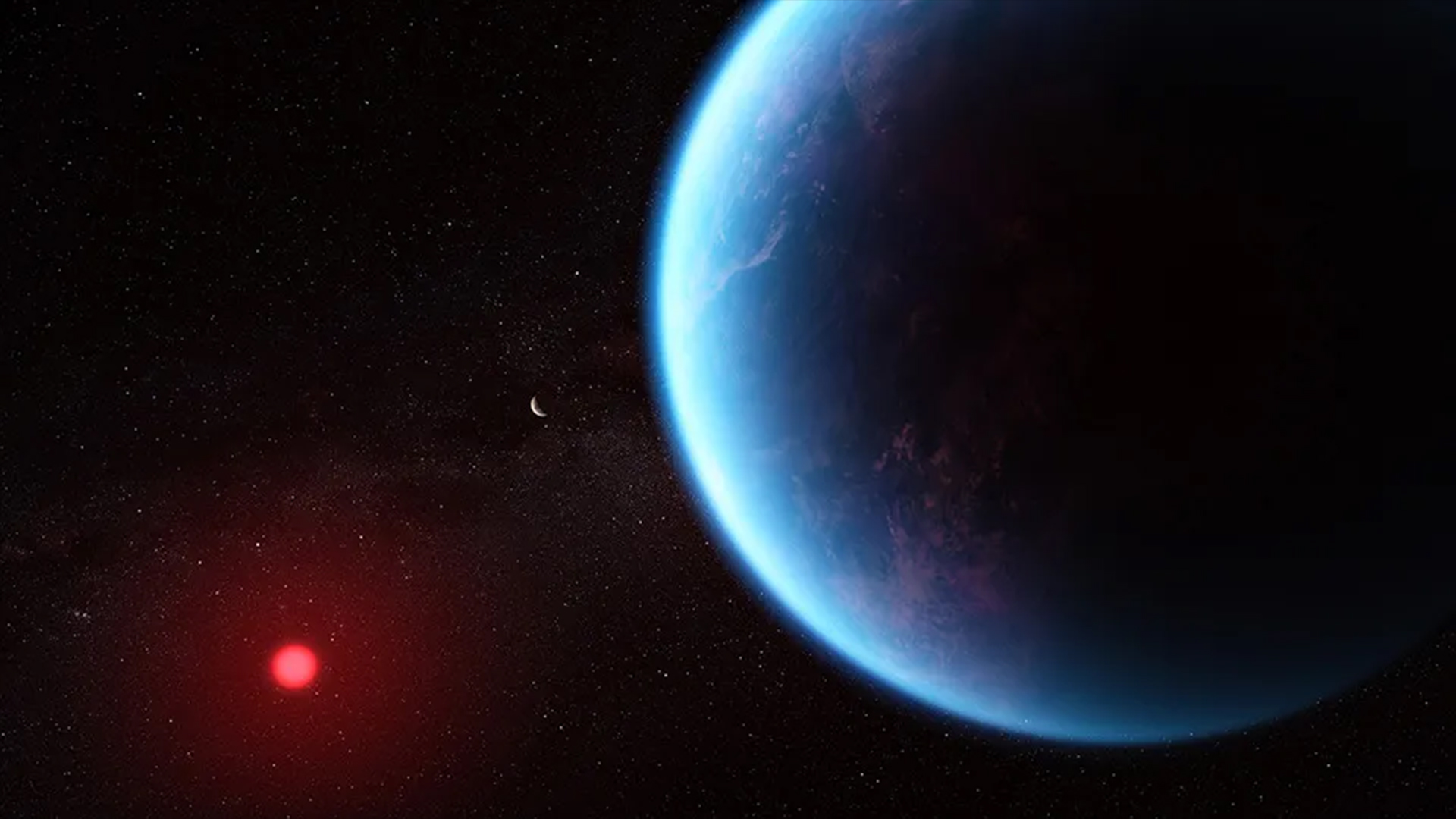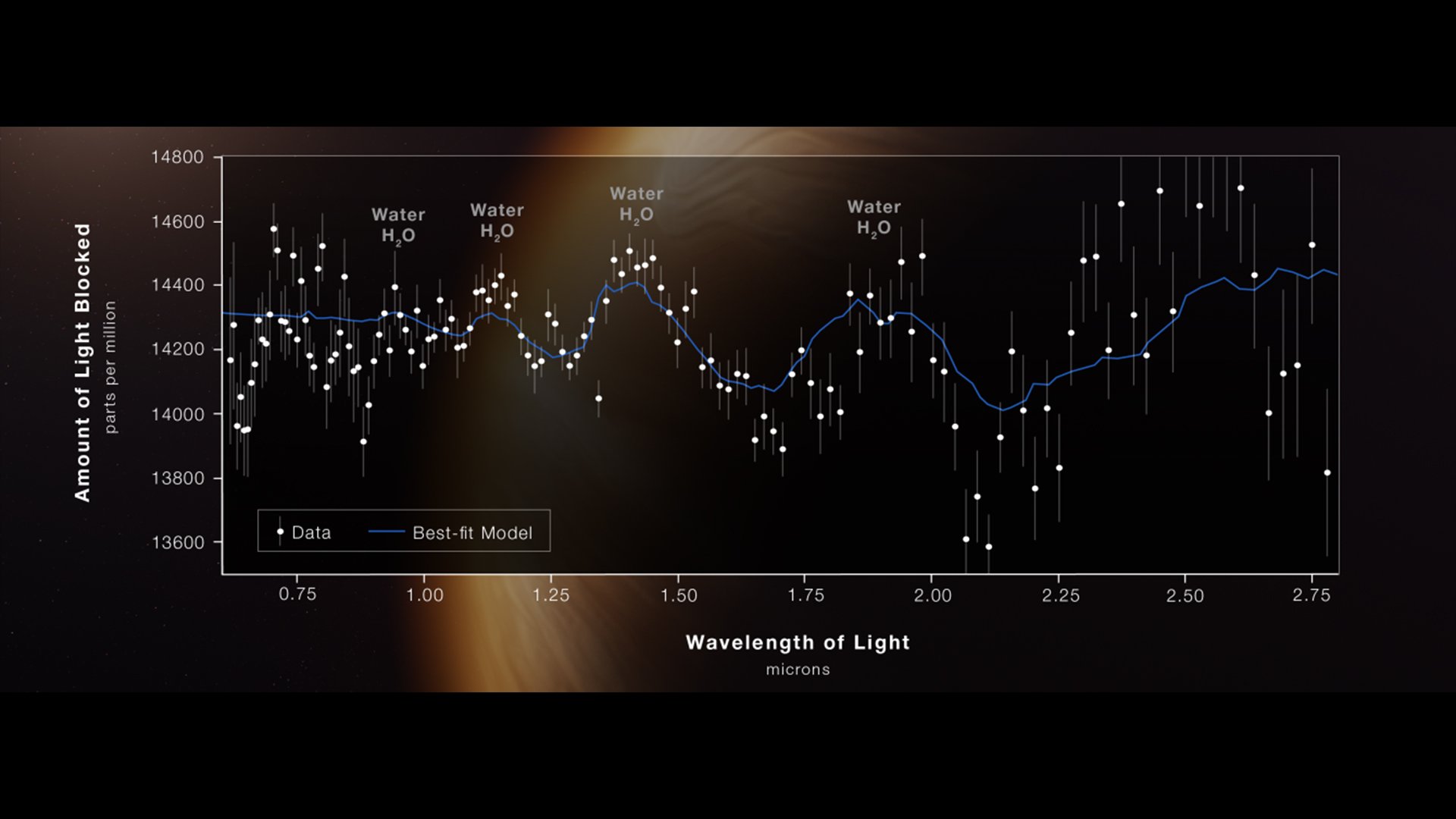
Searching for liquid water on exoplanets is the key to finding life among the stars, and now, scientists have proposed a new strategy that might improve the chances of finding it.
In the new study, published Dec. 28 in the journal Nature Astronomy, researchers hypothesized that if the atmosphere of an exoplanet has less CO2 than its neighbors, there may be vast quantities of water on its surface — or even life.
Currently, finding liquid water on planets outside the solar system is a major challenge. Of the 5,000 or so exoplanets we've discovered, liquid water hasn't been confirmed on any. The best scientists can do is detect traces of water in exoplanet atmospheres and determine whether planets could theoretically support water in the liquid state.
"We know that initially, the Earth's atmosphere used to be mostly CO2, but then the carbon dissolved into the ocean and made the planet able to support life for the last four billion years or so," study co-lead author Amaury Triaud, professor of exoplanetology at the University of Birmingham in the U.K., said in a statement.
Once carbon is dissolved in the oceans, tectonic activity then locks it away in Earth's crust, creating an effective carbon sink. This is partly why our planet has significantly lower CO2 levels compared with our neighbors — Earth's atmosphere is around 0.04% CO2, whereas the atmospheres on Venus and Mars are both over 95% CO2.
If scientists observe a similarly low-carbon atmosphere on an exoplanet, it could indicate the presence of vast oceans similar to our own, the researchers said.
Looking for CO2 is easier than finding liquid water. CO2 absorbs infrared radiation very well, meaning it produces a strong signal that scientists can detect.
It's also possible to perform this technique with existing telescopes, such as the James Webb Space Telescope (JWST). Ground-based observations should also be possible because of the specific wavelength CO2 is measured at — whereas Earth's atmosphere can torpedo experiments at other wavelengths by partially absorbing the signals.
"It's a really nice way of doing this. And it's also not going to involve a massive investment of telescope time, which is really important because that's extremely precious to our community," said Sarah Casewell, a lecturer in the school of physics and astronomy at the University of Leicester in the U.K., who wasn't involved in the research.
Tantalizingly, another scenario could contribute to an atmosphere low in carbon: life itself. The main ways life on our planet captures carbon are through photosynthesis and making shells, and around 20% of all carbon capture on Earth is caused by biological processes.
"Despite much early hopes, most of our colleagues had eventually come to the conclusion that major telescopes like the JWST would not be able to detect life on exoplanets. Our work brings new hope," study co-lead author Julien de Wit, assistant professor of planetary sciences at the Massachusetts Institute of Technology, said in the statement. "By leveraging the signature of carbon dioxide, not only can we infer the presence of liquid water on a faraway planet, but it also provides a path to identify life itself," de Wit said.

Although the approach looks like it'll work in principle, there may still be hurdles, as it's not clear how many terrestrial exoplanets also have atmospheres. "Finding the perfect system to test this on might turn out to be a little bit more challenging than we previously thought," Casewell told Live Science.
But as researchers keep discovering more exoplanets, more atmospheres will also be spotted. And this technique could help figure out whether they could sustain life.







